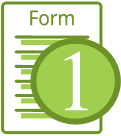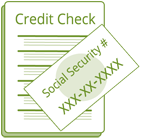April 19, 2012 (Jeff Alan)
Monthly default rates on first and second mortgages declined for a third consecutive month in March, falling below the post-crisis lows seen last August according to the S&P/Experian Consumer Credit Default Indices as the national composite declined from 2.09 percent in February to 1.96 percent in March.
First mortgage default rates fell from 2.02 percent in February to 1.88 percent in March. It was the third consecutive month that first mortgage default rates have declined. Default rates on second mortgages also declined last month, falling from 1.20 percent in February to 1.03 percent in March.
Mortgage default rates have been steadily declining since 2009 when second mortgage default rates peaked at 4.66 percent in March of that year, followed several months later by first mortgage defaults which peaked at 5.67 percent in August of the same year.
A year ago, the default rate on first mortgages was 2.33 percent, and for second mortgages, the default rate was 1.42 percent.
Default rates on auto loans also declined, falling from 1.22 percent in February to 1.11 percent in March, while default rates on bank cards took a slight turn for the worse, increasing from 4.41 percent in February to 4.47 percent in March.
David M. Blitzer, Managing Director and Chairman of the Index Committee for S&P Indices, stated, “The first quarter of 2012 was largely positive for the consumer. Not only have we resumed the downward trend in consumer default rates that began in the spring of 2009, but we appear to be reaching new lows across most loan types. The first three months of 2012 show broad based declines in default rates with first and second mortgage, auto and composite default rates all reaching post-recession lows.”
Four of the five Metropolitan Statistical Areas (MSAs) saw default rates decline in the monthly Indices with Miami posting the largest decline in default rates, falling 0.92 percentage points to 3.62 percent in March from 4.54 percent in February. In March 2011, the default rate in Miami was 5.33 percent.
Chicago posted the second largest decline, falling 0.36 percentage points to 2.35 percent in March from 2.71 percent in February. A year ago the default rate in Chicago was 2.63 percent.
The default rate in Dallas declined by 0.17 percentage points to 1.44 percent in March from 1.61 percent in February and was also down from a year earlier when the default rate stood at 1.65 percent.
The smallest decline in default rates was recorded in New York, which fell 0.03 percentage points to 2.01 percent from 2.04 percent in February. In March 2011, the default rate in New York was 2.26 percent.
Los Angeles was the only MSA to post an increase last month, climbing a very modest 0.01 percentage point to 1.88 percent in March. A year ago, the default rate in Dallas was 2.73 percent.
Tags: S&P, Experian, Consumer Credit Default Indices, mortgage default rates, auto loan default rates, bank card default rates
Source:
S&P/Experian




